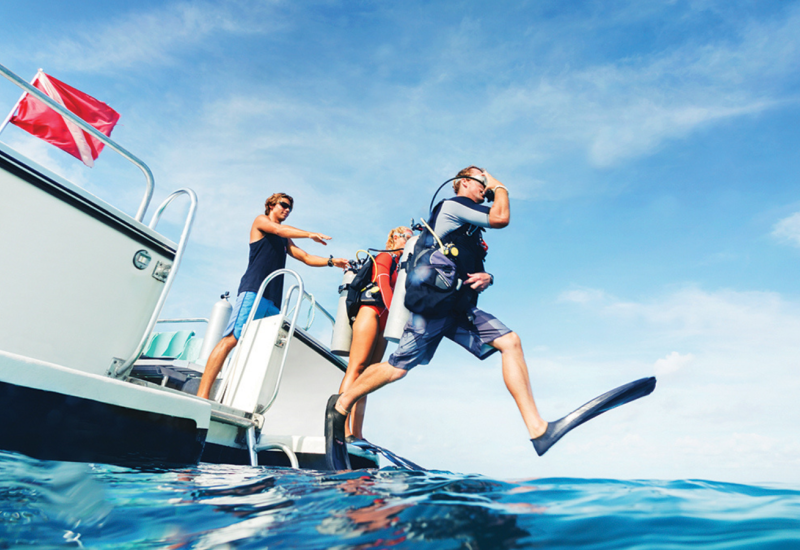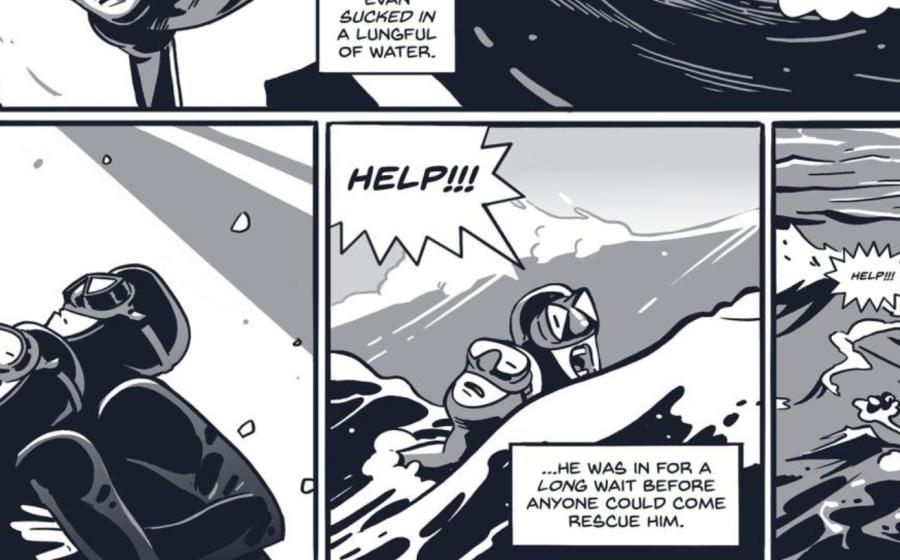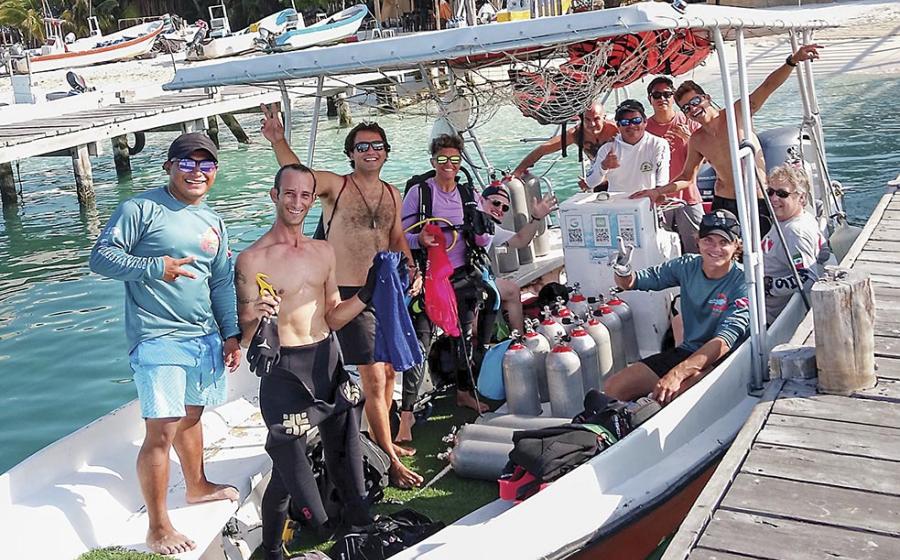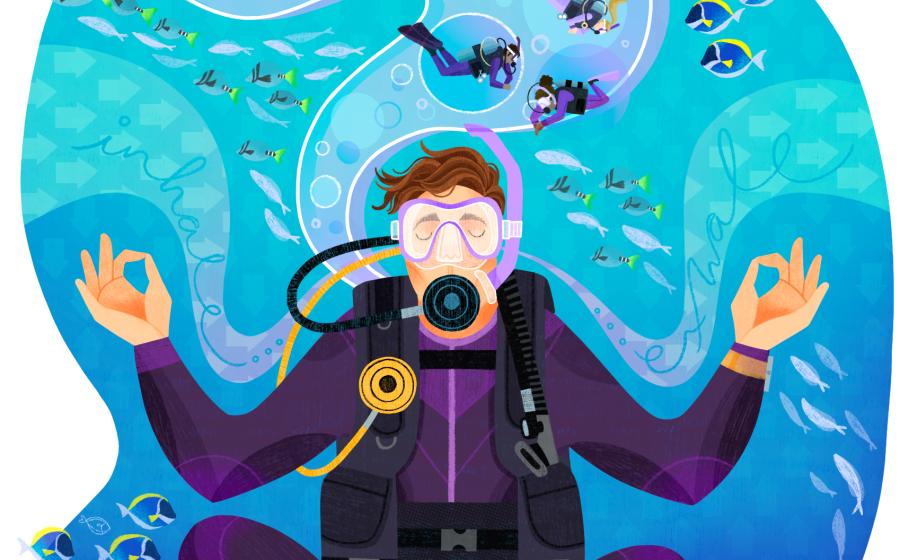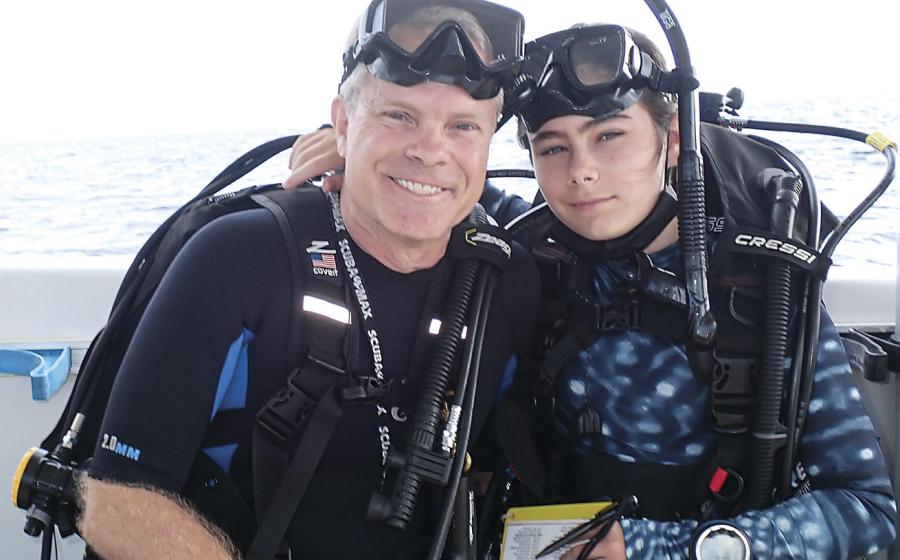How to Disinfect Your Dive Gear
Not so long ago, many of us might have considered our gear “clean” if we did a decent job rinsing off the salt and sand after our last dive of the day. But, like pretty much everything since COVID-19 appeared, properly cleaning dive gear requires a whole new routine.
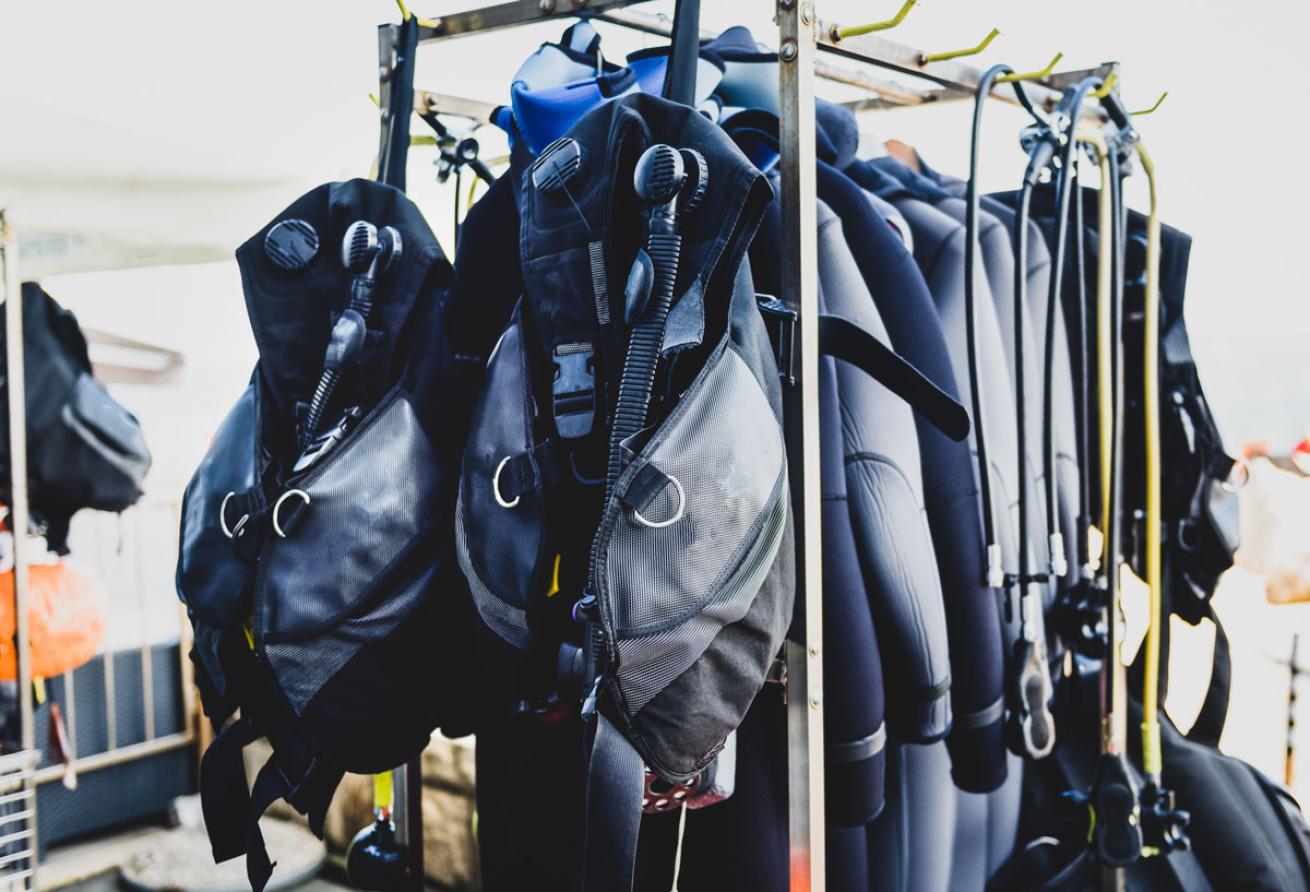
Shutterstock.com/JGAScuba gear dries on a stand at a dive center.
Federal health agencies recommend using disinfectants known to be effective against the virus to treat personal items such as dive gear. (Note that among the changes is that some products, such as the sanitizer Steramine, that were commonly used on dive gear in the past, are not among those now approved for disinfecting against the virus that causes COVID-19.)
Below is the latest guidance from health and dive authorities about procedures and products suitable for disinfecting gear.
Use the proper disinfectant
For treating non-porous surfaces, the CDC recommends using either a commercial disinfectant specifically cited by the EPA to protect against the coronavirus, or a diluted solution of common household bleach.
For most divers, using a diluted bleach solution (explained below) is likely the simplest method, though an explanation of the issues in identifying and obtaining commercial products helps illustrate why.
You can find the full list of EPA-approved COVID-19 disinfecting products by searching the EPA List N website. But be warned the process is unwieldy. The list includes more than 400 disinfectants, many of them sold to consumers under multiple names. Also, few of them are listed for use on diving or related types of gear, and finding those appropriate for dive gear means searching through their extended product labels, which are generally long and not especially search-friendly. For instance, a recent search of the EPA list (which continues to grow) turned up just two products that specifically mention diving gear, said DAN risk mitigation coordinator Chloe Strauss. However, some products on the EPA list that are approved for disinfecting similar types of gear are suitable for dive, she said. “So, for example, if a product is specified for use on respirators, that would be OK to use on a regulator,” she said. Another challenge is availability, since many businesses and institutions need the products.
“These are products that are widely used in medical facilities, so there is a high demand,” said DAN risk mitigation director Francois Burman. Along with high demand, state or local regulations might prevent their sale.
For example, the two List N products specified for use on dive gear--Microban QGC and Opti-Cide 3 (both also sold under multiple other names)—aren’t available for sale in California, Burman noted. (Also, note that Steramine, a sanitizer sometimes used in the dive industry before the appearance of Covid-19, is not on EPA’s List N.)
A simple solution
That brings us back to household bleach, which the CDC has determined is “effective against coronaviruses” if used as directed. The agency recommends disinfecting hard (non-porous) surfaces in a diluted solution of 1/3 cup of bleach to 1 gallon of clean fresh water, with a contact time of one minute. Gear should be submerged, with all surface areas to be disinfected in direct contact with the solution for one minute, then removed and rinsed thoroughly in fresh water, Strauss said. Gear should be allowed to completely dry before use.
“If you just dunk it in the bleach and hang it out to dry, that’s not going to work,” she said. “You need to follow the procedure of making sure you have that full minute of contact, rinse it in fresh water and let it dry. That’s really important.”
It’s also important to get the concentration right—in other words, don’t use solutions that are weaker or stronger than recommended, or you risk damaging gear or insufficiently disinfecting it.
Burman noted that in the past, some manufacturers had recommended against using bleach on their regulators. That was based on tests that used much stronger solutions, which could damage sensitive gear.
“They were using bleach at five times the concentration we’re talking about, and leaving it to soak for a long time,” he said. With the proper concentration of bleach and contact time, damage to regs and other gear isn’t a concern, Burman said.
Which bleach to use
The bleach should be the common household variety, which usually is about 5 to 6 percent sodium hypochlorite, Burman said. (The concentration should be listed on the label.)
Scented bleach with citrus, pine or other fragrances can be used if it’s a suitable strength, but don’t use “super-power bleach” or pool chlorine, which is much more concentrated and could damage gear, Burman said.
What to disinfect
While researchers are still working to understand all the particulars of how the coronavirus is spread, “what we’re most concerned about are the things that will contact your mucus membranes,” Strauss said.
That means reg second stage, mask, snorkel and BC oral inflator, which are all non-porous surfaces that CDC-recommended disinfectants should be effective on. While those disinfectants aren’t specified for use on porous gear such as wetsuits, that gear isn’t a major concern in terms of transmission, Burman said. Giving a wetsuit a vigorous wash with soap and water and hanging up to drip dry is sufficient, Burman said.
Rental gear safety
Of course if you always use your own gear, there’s less worry of infection. But is it still safe to rent a regulator or other dive gear? If the shop or operator you rent from uses an approved disinfectant in the proper manner, “there’s no reason to believe it would be unsafe for you to use,” Strauss said.
To be on the safe side, and for your own peace of mind, ask the dive shop for specifics about their disinfection practices, which they should be happy to share with you, she said.
Disinfecting your behavior
Staying safe requires taking precautions that aren’t only specific to diving, such as social distancing, frequent hand washing and wearing a mask in public, Burman said.
“We also need to practice good hygiene,” he said. “Don’t just disinfect your regulator and ignore those other precautions.” On the dive boat, it’s not necessary to disinfect your reg between dives, Burman said. But take simple precautions to keep your sensitive gear from contact with other divers - for example by putting your reg mouthpiece in a bag or inside your BC pockets during your surface interval. And no matter your preferred form of mask defog, stick with the kind that comes in a bottle, said Strauss, who admitted she prefers the saliva technique. For now, she said, “No spitting.”
Read more about DAN's recommendations about COVID-19. You can also email DAN with your questions at [email protected].



